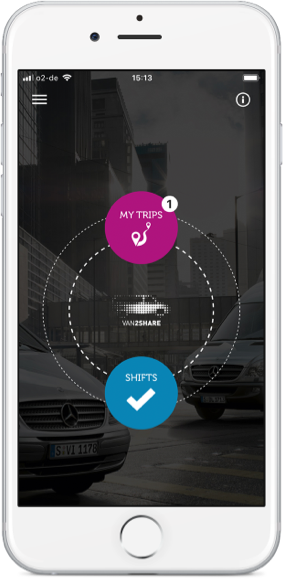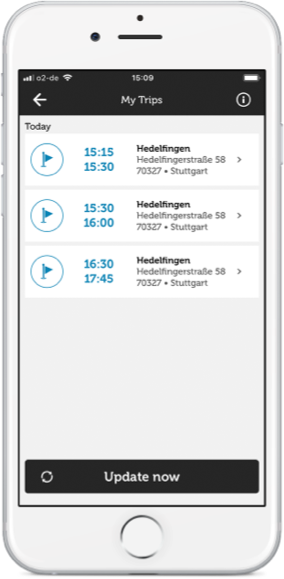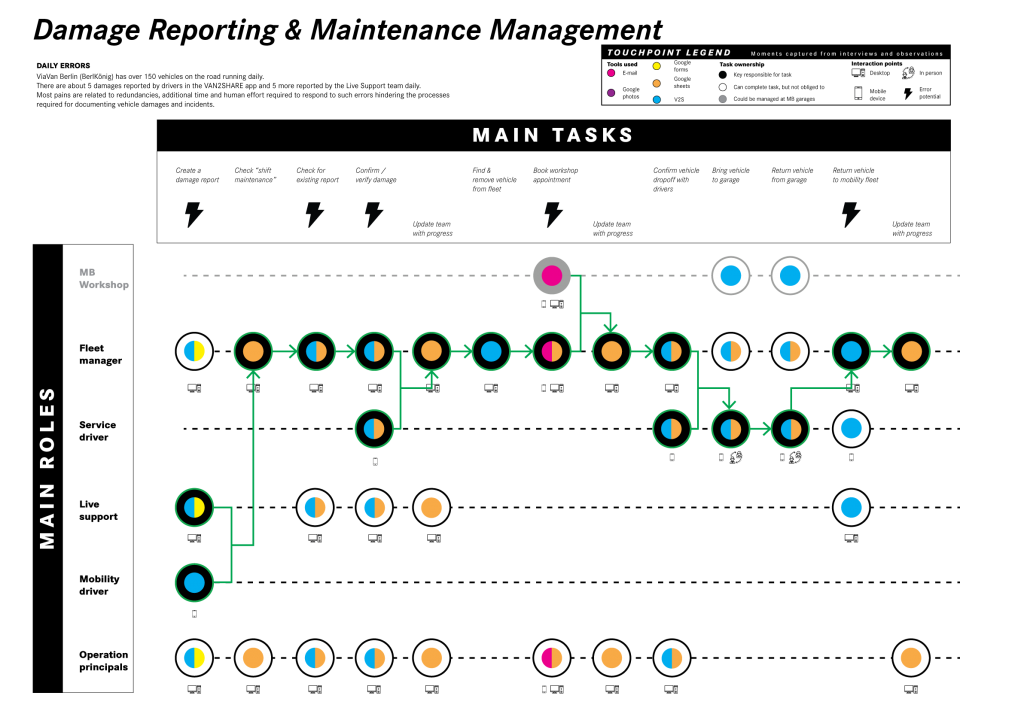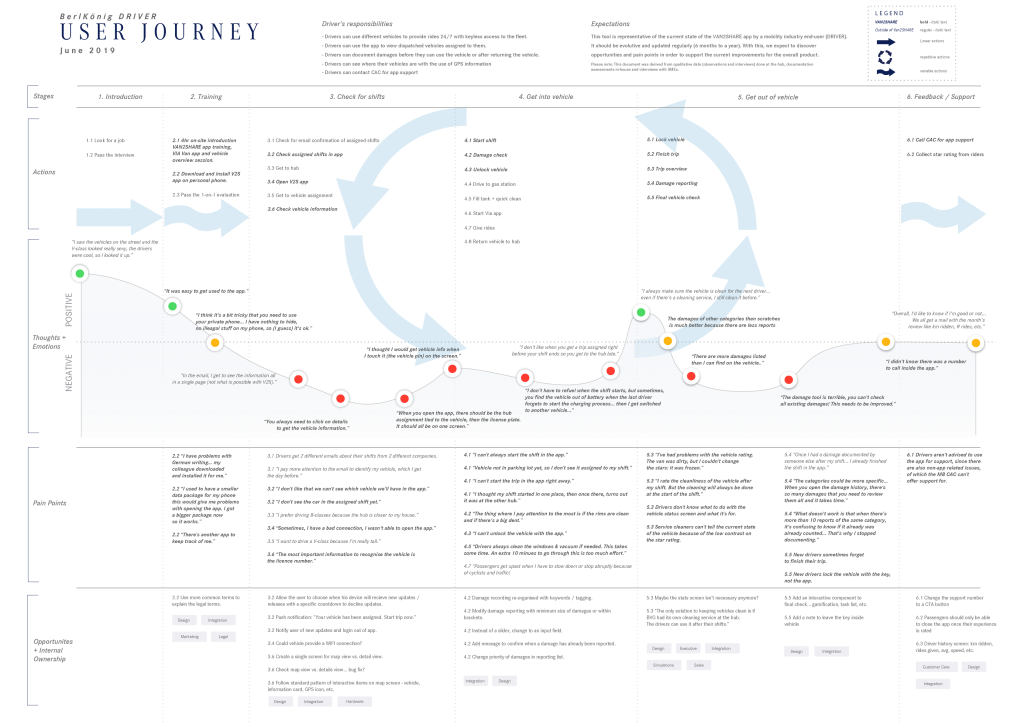The Process


There were many issues identified by key account managers, customers, users and the partnering developer teams. But without priorities defined, the project development focused more on releasing technical features, which weren’t contributing to improving the user or customer experiences. In order to provide solutions for scaling the project, prioritisation was key while also orchestrating a series of user research methods to support the assumptions made by stakeholders.
UX Efforts
Driver and fleet manager field interviews on & off driving routes | Persona Creation
Customer surveys on needs and feature prioritisation | Qualitative Data Analysis
Service blueprint development with internal stakeholders
User flow assessment and refinement | Customer & User Journey Map
Task analysis with drivers and fleet managers | User Experience Improvement Markers
Research
They say the best way to get information is to hear it from the horse’s mouth… I couldn’t agree more! We had the chance to speak with real users in their working environments which brought us plenty of content to draw from for qualitative validation of their challenges and needs.


These were some of the visual deliverables we provided from interviews with 30 drivers, 3 fleet managers, 2 operations experts and 5 product team experts (business developers and key account managers).
In our “working out loud approach”, we were able to include our stakeholders in every steps we made by returning with results and discussing opportunities for improvements and new potential features.
This was no longer assumptions-based work, but insight-based from real users. The development team was also able to re-prioritise feature development based on the different most challenging moments the users were facing, which build a higher empathy for most persons involved in the research process.